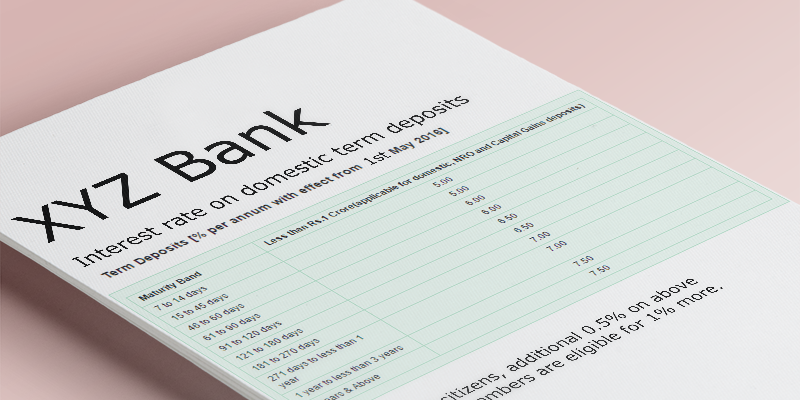A Bank Pass Book refers to a Savings account Pass Book. It is issued by banks for a running or operating bank account. But practically, Pass Book is used to be issued for Current Account for limited transaction accounts, Recurring Deposit Account, Small loan accounts. The transactions appearing on a passbook is a conclusive evidence of banking transactions.
The cover page of the passbook contains Name of the Bank. On the top of the first page of the passbook displays the details of the Bank such as Name of the bank, Branch Name and code no, IFSC No. Business hour etc. and at below part contains account holders details like name and address of the account holder, Account No. Date issued etc. In the next page or end of the passbook certain extract from the Savings Bank rules are reproduced for the customers’ convenience. From next page onwards, the details of transaction are recorded. Initial payment into the account would be the first transaction in a Pass Book. However, banks now often issue account statements instead of passbooks with the same details. Customers can choose to receive daily, weekly, or monthly statements or through internet banking facility customers can view transactions in their account.
Traditionally, Bank customers keep track of their account through updated passbook or account statement issued by their bank. Customer needs to report to the concerned branch of the bank for resolving any discrepancies that may have been discovered in the passbook. Any error in the Pass Book can be corrected only by the bank. The customer on his own should not write anything in the passbook. In case, one Pass Book has been completely filled with entries, banker will issue a “Continuation Pass Book”. The word “Continuation” will be mentioned in the first page of the next Pass Book issued.
Incase passbook is manually filled in every entry in the Pass Book must be countersigned by the officer of the bank. Bank customers need to monitor pending transactions and keep an eye on un-cleared transactions so they know when that money will be available for withdrawal from bank or keep track of realization of the instrument deposited by them.
The transactions in the passbook is formatted in 7 columns viz. Date (transaction date), Cheque No. ( No. of cheque leaf used for payment), Particulars, Debit, Credit, Balance and initial.
A bank passbook or bank statement typically includes the following transactions:
1) Deposits of money: Includes cash deposits, Cheque, Drafts, Banker cheques, Pay order, Gift Cheque deposited to the account. Interest earned on SB account and, Term deposits, Proceeds of Travellers Cheques, Purchase of foreign currency, foreign currency denominated cheques/drafts collected or purchased, Domestic Cheque discounted, maturity proceeds of deposits, loan amount credited to the account etc. Bank customers also get NACH Credit (National Automated Clearing House), through electronic payment service that allows institutions to pay a large number of beneficiaries in their bank accounts. This can include paying dividends, interest, salaries, and pensions.
2) Withdrawals: Money taken out like cash withdrawals, money transferred to other accounts of same bank or other banks, investments through the debit of the account, Payments of cheques issued third parties by the account holder, ATM withdrawals UPI transactions, or debit card purchases. However, individual payments made through UPI Lite shall not reflect in passbook.
3) Fees: Service Charges by the bank, like monthly service fees or overdraft fees.
4) Rent: Annual locker rent debited to the customer’s account.
5) Loan: EMI deducted overdue interest on loan deducted and other loan associated transactions.
6) Recurring payments: Includes standing instructions for credit to the RD account recurring payments towards utility bills or any other payments instructed by the customer.
7) Mandate-based NACH debit service that allows corporations to collect bills, taxes, loan installments, and more from a large number of customers to the debit of their accounts.
Related Posts:






